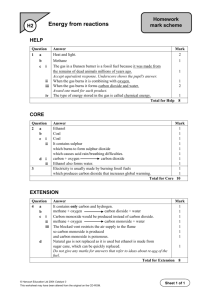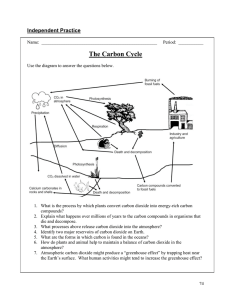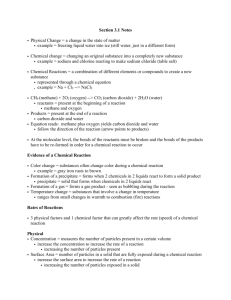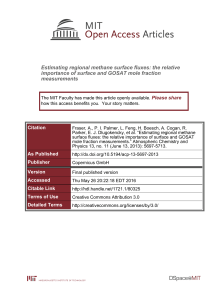Document 11842109
advertisement
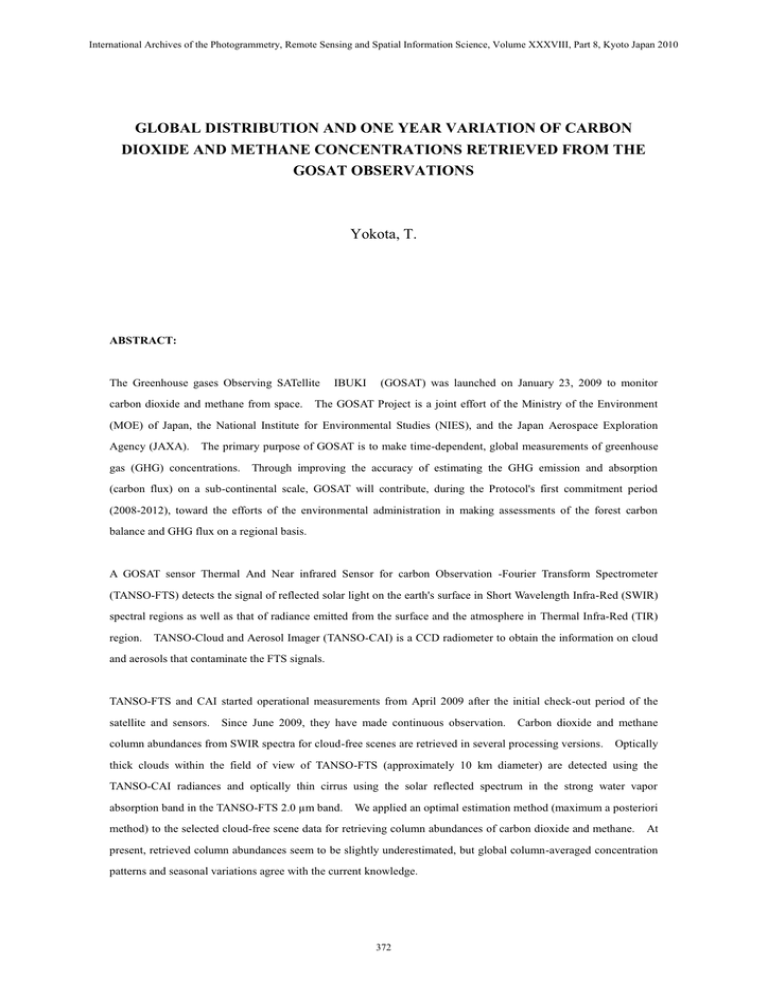
International Archives of the Photogrammetry, Remote Sensing and Spatial Information Science, Volume XXXVIII, Part 8, Kyoto Japan 2010 GLOBAL DISTRIBUTION AND ONE YEAR VARIATION OF CARBON DIOXIDE AND METHANE CONCENTRATIONS RETRIEVED FROM THE GOSAT OBSERVATIONS Yokota, T. ABSTRACT: The Greenhouse gases Observing SATellite carbon dioxide and methane from space. IBUKI (GOSAT) was launched on January 23, 2009 to monitor The GOSAT Project is a joint effort of the Ministry of the Environment (MOE) of Japan, the National Institute for Environmental Studies (NIES), and the Japan Aerospace Exploration Agency (JAXA). The primary purpose of GOSAT is to make time-dependent, global measurements of greenhouse gas (GHG) concentrations. Through improving the accuracy of estimating the GHG emission and absorption (carbon flux) on a sub-continental scale, GOSAT will contribute, during the Protocol's first commitment period (2008-2012), toward the efforts of the environmental administration in making assessments of the forest carbon balance and GHG flux on a regional basis. A GOSAT sensor Thermal And Near infrared Sensor for carbon Observation -Fourier Transform Spectrometer (TANSO-FTS) detects the signal of reflected solar light on the earth's surface in Short Wavelength Infra-Red (SWIR) spectral regions as well as that of radiance emitted from the surface and the atmosphere in Thermal Infra-Red (TIR) region. TANSO-Cloud and Aerosol Imager (TANSO-CAI) is a CCD radiometer to obtain the information on cloud and aerosols that contaminate the FTS signals. TANSO-FTS and CAI started operational measurements from April 2009 after the initial check-out period of the satellite and sensors. Since June 2009, they have made continuous observation. Carbon dioxide and methane column abundances from SWIR spectra for cloud-free scenes are retrieved in several processing versions. Optically thick clouds within the field of view of TANSO-FTS (approximately 10 km diameter) are detected using the TANSO-CAI radiances and optically thin cirrus using the solar reflected spectrum in the strong water vapor absorption band in the TANSO-FTS 2.0 µm band. We applied an optimal estimation method (maximum a posteriori method) to the selected cloud-free scene data for retrieving column abundances of carbon dioxide and methane. At present, retrieved column abundances seem to be slightly underestimated, but global column-averaged concentration patterns and seasonal variations agree with the current knowledge. 372 International Archives of the Photogrammetry, Remote Sensing and Spatial Information Science, Volume XXXVIII, Part 8, Kyoto Japan 2010 Level 1B products (spectral radiances from TANSO-FTS and four-band images from TANSO-CAI) have been opened to the registered public users from late October 2009. Level 2 products (carbon dioxide and methane column abundances from TANSO-FTS SWIR and cloud flag from TANSO-CAI) have been opened to the registered public users from mid February 2010. June 2009 are presented here. Distribution and variation of the Level 2 products for about one year since Summary of the validation status of the Level 2 products compared with ground-based high resolution FTS data and the aircraft in-situ measurement data are also shown here. 373


